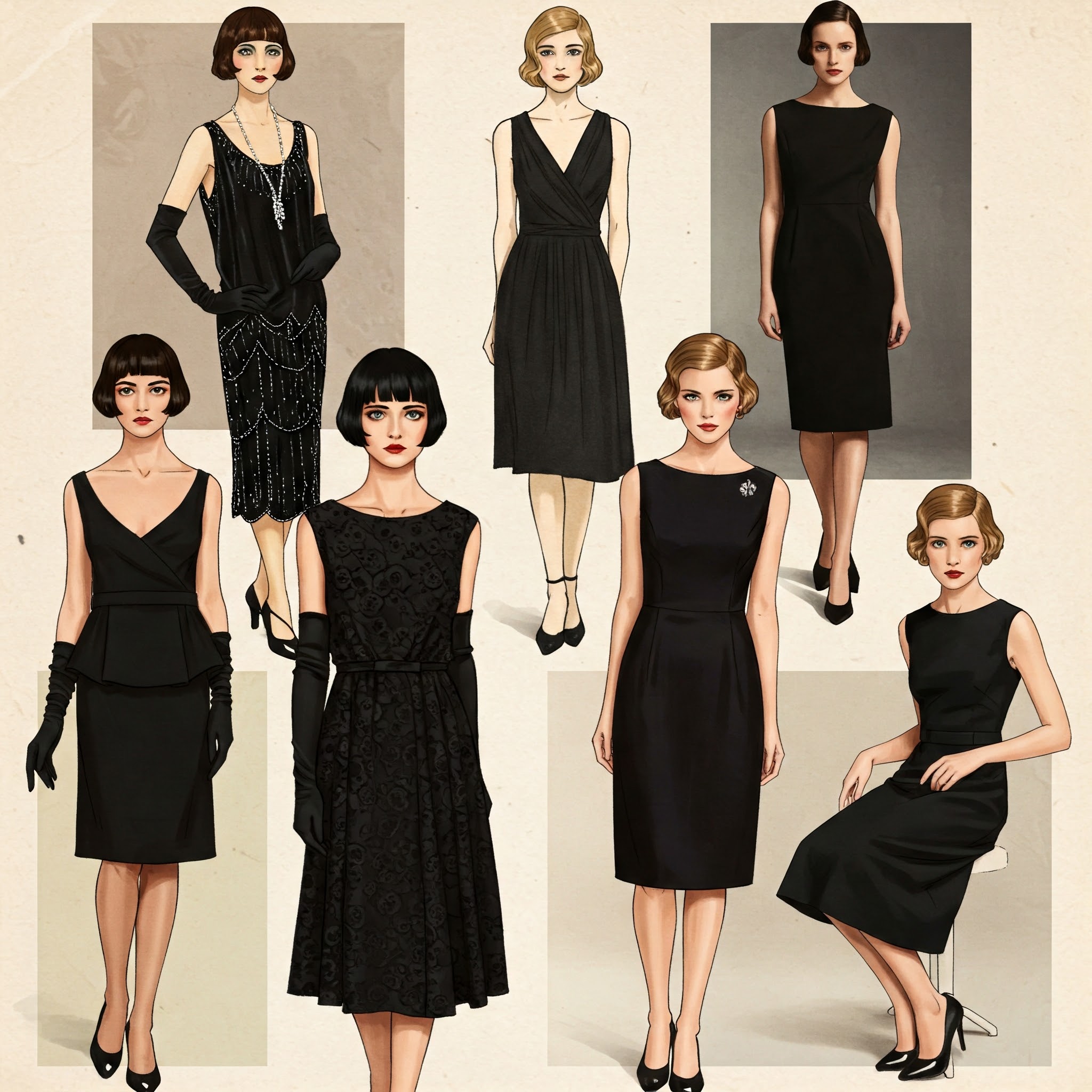In the ever-shifting landscape of fashion, where trends come and go with dizzying speed, certain garments possess an almost mythical status. They transcend seasons, decades, and even drastic shifts in aesthetic sensibility, remaining perpetually relevant, stylish, and desirable. Among these icons, few command as much reverence or boast such versatile power as the Little Black Dress (LBD). From its revolutionary origins in the 1920s to its ubiquitous presence in modern wardrobes, the LBD has evolved, adapted, and endured, becoming far more than just a garment—it is a symbol of elegance, independence, sophistication, and timeless chic.
Before the LBD achieved its iconic status, the color black in clothing often carried specific connotations. For centuries, it was primarily associated with mourning, worn as a strict social requirement after the death of a loved one. It was also practical for working-class women due to its ability to hide dirt. While black appeared in high fashion, it was not typically seen as a color for versatile, everyday elegance or chic cocktail wear. Dresses were often elaborate, colorful, and heavily adorned.
The narrative of the LBD truly begins with Gabrielle “Coco” Chanel. In 1926, American Vogue published an illustration of a simple, short, black crêpe de Chine dress designed by Chanel. Vogue famously dubbed it “Chanel’s’ Ford”—referencing the Model T Ford’s accessibility and ubiquity, predicting it would become “a sort of uniform for all women of taste.” This was a radical concept for its time. Chanel’s vision was to liberate women from the constraints of overly ornate, impractical clothing. She proposed a simple, straight, calf-length dress in black—a color previously loaded with somber meaning—as a versatile, elegant, and potentially democratic option accessible to women across different social strata. Its simplicity was its strength, a blank canvas allowing the woman wearing it to shine and making it suitable for various occasions with different accessories.
The timing of the LBD’s popularization was also significant. The Great Depression era of the 1930s made Chanel’s idea of an affordable, durable, and adaptable dress particularly appealing. Women needed practical clothing that could serve multiple purposes and withstand economic hardship. The LBD fit this need perfectly, becoming a reliable staple that could be dressed up for a rare evening out or worn simply for the day. During World War II, the LBD remained practical and widely worn due to fabric rationing, emphasizing utility over extravagance.
Post-war, as fashion regained some of its exuberance, the LBD didn’t disappear but began to acquire new dimensions, influenced partly by Hollywood glamour. While colorful and elaborate gowns were prevalent, actresses like Marilyn Monroe and Rita Hayworth occasionally appeared in fitted black dresses that emphasized their figures, adding an element of allure and sex appeal to the LBD’s repertoire.
However, the moment that truly cemented the LBD’s status as an icon of effortless sophistication came in 1961 with the film Breakfast at Tiffany’s. Audrey Hepburn, playing the enigmatic Holly Golightly, appeared in the opening scene wearing a stunning, floor-length black satin sheath dress designed by Hubert de Givenchy. Though longer than Chanel’s original concept, this dress perfectly embodied the LBD’s potential for elegant simplicity and served as the perfect backdrop for Holly’s character and her signature pearls and sunglasses. It became instantly legendary and solidified the image of the LBD as the epitome of chic, cool, and timeless style. This moment arguably shifted the perception of the LBD from just a practical garment to a powerful statement of sophisticated independence.
From the 1960s onwards, the LBD proved its incredible adaptability. It was reinterpreted by designers through every major fashion movement. In the rebellious punk era, the LBD might be short, tight, and paired with ripped tights and boots. In the power-dressing 1980s, it gained padded shoulders and more structured silhouettes. The minimalist 1990s embraced the LBD’s inherent simplicity, favoring slip dresses and clean lines. This ability to be molded by, yet remain distinct from, prevailing trends is key to its longevity. It’s a garment that can be innocent or seductive, rebellious or conservative, minimalist or maximalist, depending on its cut, fabric, and styling.
So, why does the little black dress continue to endure as a wardrobe essential for women globally? Its inherent qualities are hard to beat: the color black is universally flattering and slimming; its simplicity makes it a versatile base for accessorizing; it can seamlessly transition from day to night or from a formal event to a casual outing; and it often provides a sense of confidence and polish with minimal effort. It acts as a reliable “blank canvas” in a woman’s wardrobe.
Contemporary designers constantly offer fresh interpretations of the LBD, playing with length (from micro-mini to maxi), silhouette (bodycon, A-line, slip, sculptural), fabric (jersey, lace, velvet, leather), and details (cut-outs, embellishments, unique sleeves). Yet, the core concept—a simple, black dress—remains instantly recognizable and powerful.
Culturally, the LBD has come to symbolize many things: the independent woman who doesn’t need flashy colors to stand out, the confident woman who embraces understated elegance, or even the rebellious woman using black as a statement. It represents a form of democratic luxury, a piece that is accessible at many price points but always carries an aura of sophistication inherited from its iconic moments.
In conclusion, the little black dress is far more than just a dress. It is a piece of fashion history, a testament to the power of simple design, and an enduring symbol that has adorned and empowered women for nearly a century. Its ability to adapt while retaining its core essence ensures its continued status as an indispensable icon in the world of style, proving that true elegance is indeed timeless.


